This village located in the vicinity to the mountains is home to the oldest Roman Catholic church in the Bieszczady region.
According to the tradition, the origins of the church are linked with the testament written in 1621 by Piotr Bal, the chamberlain of Sanok, and inheritor of the village. Converted from Calvinism, he expressed a wish for his wife to also return to Catholicism and to build a chapel which would be a resting place for them both.
The log church comprises a single nave and a chancel enclosed in semi-hexagonal walls and oriented southward. The post-and-beam tower comprises a top chamber. The whole structure is covered with shingles. At the ends of the ridge there are wooden strips ending with open-work metal ornaments.
At the entrance to the nave there are twin door-frames with ogee arches. Two additional portals of the same shape were built on each side during reconstruction works. The gallery is supported on a pillar made from material previously used as the rood beam, and retaining remnants of a Latin inscription. The lush interior furnishings, dating from 1727, include the late Baroque altars, made by woodcarvers from Krosno, as well as impressive figural and illusionist wall paintings. Years later a series of bas-relief representations of the Stations of the Cross were contributed by the legendary artist who lived in the Bieszczady Jędrek Wasilewski “Połonina”.
At the time when the church functioned as a manorial chapel (1800s), it was frequently visited by Countess Kuczkowska, née Henrietta Ewa Ankwiczówna, who years earlier had met young Adam Mickiewicz in Rome. The wedding, however, did not happen, because the maiden’s father objected. Mickiewicz immortalised his love to Ewa in the poem Do mogo Cziczerona (To my Cicerone) (Part III of Dziady). Some people believe that the girl and her father provided inspiration for the characters of Ewa Horeszkówna and her father Pantler Horeszko in Pan Tadeusz (Master Thaddeus).
Photo: Krzysztof Zajączkowski
Gallery
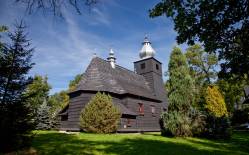
Recommended venues on the Trail
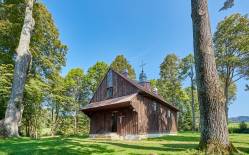
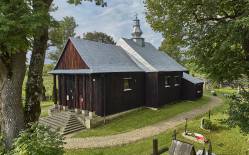
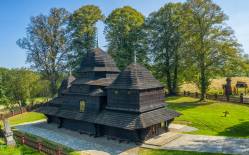
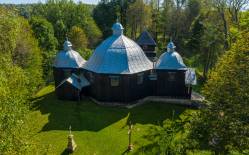



This website has been modernized with the financial support of the European Union under the Cross-Border Cooperation Programme Poland-Belarus-Ukraine 2014-2020. The responsibility for its content lies solely with the Podkarpackie Regional Tourism Board and cannot, in any case, be treated as a reflection of the position of the European Union, the Managing Authority, or the Joint Technical Secretariat of the Cross-Border Cooperation Programme Poland-Belarus-Ukraine 2014-2020.









